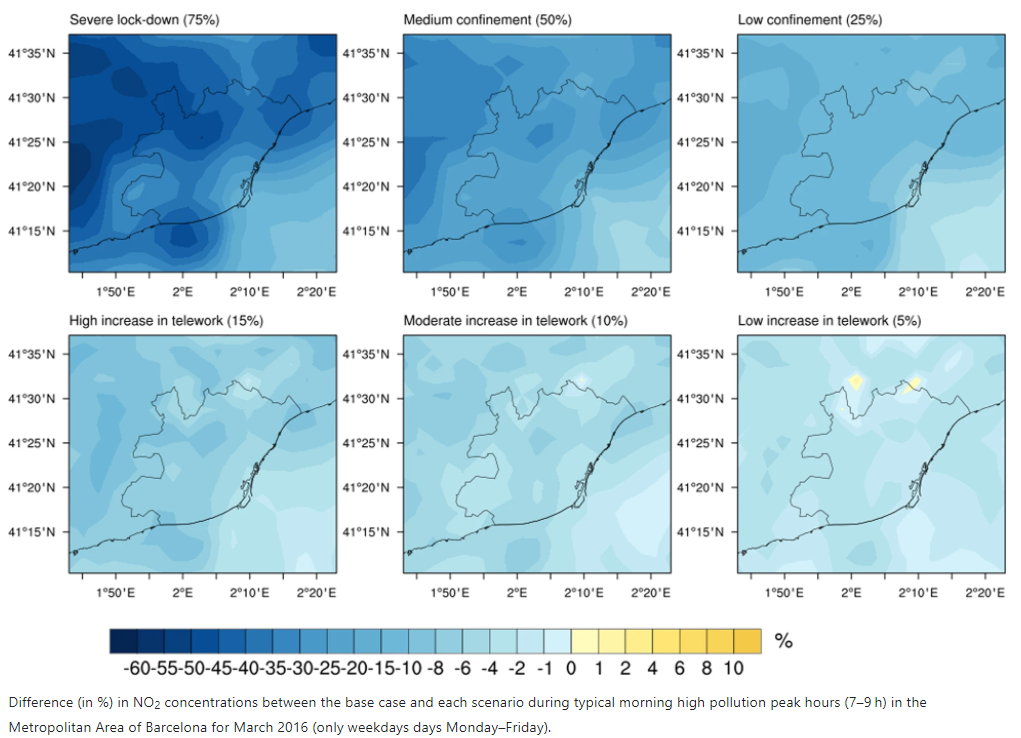Publication in Urban Sustainability
6 September 2021
See full article/ Veure l’article complet: https://doi.org/10.1038/s42949-021-00037-7
English:
The rigorous traffic limitations during COVID-19 have forced many people to work from home, reaching an outstanding degree of teleworking and reduction in air pollution. This exceptional situation can be examined as a large-scale pilot test to determine the potential of improving urban air quality through teleworking. Based on observed traffic reductions during the COVID-19 lockdown in Barcelona, we formulate socio-occupational scenarios, with various configurations of teleworking, and simulate them using the chemistry transport model WRF-Chem with multi-layer urban scheme. By intensifying teleworking to 2, 3, and 4 days a week, averaged NO2 concentrations are reduced by 4% (−1.5 μg m−3), 8% (−3 μg m−3), and 10% (−6 μg m−3), respectively, while O3 increases moderately (up to 3 μg m−3). We propose that teleworking be prioritized and promoted as an effective contribution towards reduction of long-term urban air pollution and short-term pollution peaks.
Català:
Les rigoroses limitacions de trànsit durant la COVID-19 han obligat a moltes persones a treballar des de casa, aconseguint un elevat nombre de teletreball i en conseqüència una reducció de la contaminació de l’aire. Aquesta situació excepcional es pot estudiar com una prova pilot a gran escala per determinar el potencial de millora de la qualitat de l’aire urbà a través del teletreball. A partir de la reducció de trànsit observada durant el confinament per la COVID-19 a Barcelona, hem format escenaris sociolaborals, amb diverses configuracions de teletreball, i els hem simulat utilitzant el model de transport químic WRF-Chem amb esquema urbà multicapa. En intensificar el teletreball a 2, 3 i 4 dies a la setmana, les concentracions mitjanes de NO2 es redueixen en un 4% (−1,5 μg m−3), un 8% (−3 μg m−3), i un 10% (−6 μg m−3), respectivament, mentre que O3 augmenta moderadament (fins a 3 μg m−3). Proposem que es prioritzi i promogui el teletreball com una contribució efectiva a la reducció de la contaminació de l’aire urbà a llarg termini i als pics de contaminació a curt termini.
